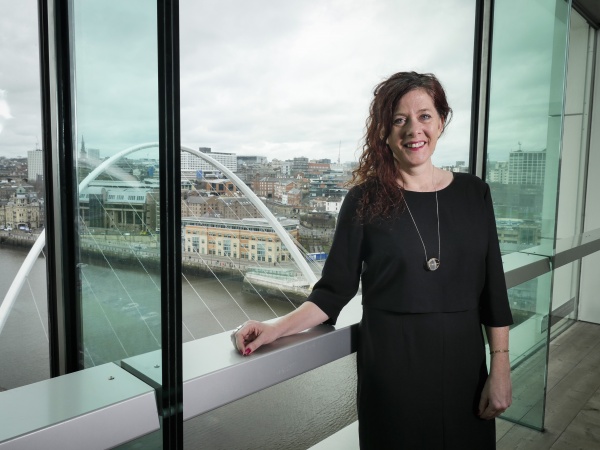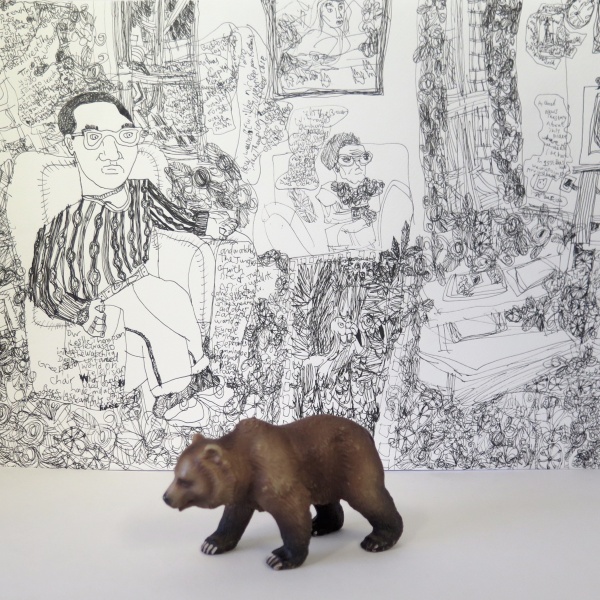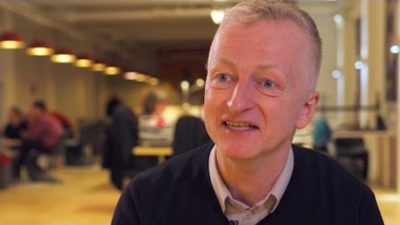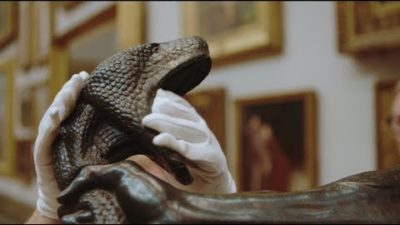Sarah Munro became Director of internationally renowned gallery, BALTIC Centre for Contemporary Art in November 2015. Throughout her career in the arts, Munro has played a part in nurturing and showcasing work by disabled artists. Joe Turnbull caught up with her to discuss her career thus far, recent projects at BALTIC, and what the landscape looks like for the future.
It’s 1991 in the UK, The British Council of Disabled People have just published their report Disabled People in Britain: A Case for Anti-Discrimination Legislation (the legislation wouldn’t come into force for another four years); Celeste Dandeker and Adam Benjamin are busy setting up Candoco Dance Company; and a young Sarah Munro has just started working at an arts and disability organisation called Artlink Edinburgh.

“I was always very supportive of the need to create a space for disabled individuals to carve out their own identity, their own space and take control of their own agenda creatively. There were a group of disabled people who had been taking part in arts projects again and again in little 12-week courses, within different centres, but their practice wasn’t being moved forward. The response was to set up a yearlong project, ‘Creation of a New Self Image’ with a group of 7 or 8 disabled people, who selected to participate because of their interest in photography.”
“I invited artists, Brian Jenkins who had been a student at the Glasgow School of Art, was a wheelchair user and was in the British Art Show in 1990, and Frankie Raffles photographer and activist who was key in working on the Zero Tolerance Violence Against Women campaign.”
“The project culminated in a group exhibition at the Collective Gallery which showed their individual practice and a large scale public artwork and campaign down Princes Street in Edinburgh City Centre ‘Your Frame of Mind is Our Disability’. We used these huge hoardings for a provocative in-your-face campaign. Each artist creating a powerful self-portrait, with text underneath selected to represent how they felt others stigmatized them, for example ‘brainless,’ ‘redundant,’ ’invisible’, ‘sexless’ etc.”
Fast forward some 15 years to 2008 and Munro, as Director of Tramway, Glasgow found herself on the edges of a quiet revolution in Scottish contemporary dance, with a number of disabled practitioners pushing the boundaries of the aesthetics and what a contemporary dancer could be.
“Three really crucial things happened in Scotland at that time. Firstly, it was the support and foresight of the funding bodies, in effect Creative Scotland. You had Anita Clark, a really committed individual in the funding system who had the vision, capacity and the power to create strategic funding to support significant change and impact, manifest in a Dance Agent for Change model in 2008.”
“Anita approached me to see if Tramway would host, but I had only been in the job for three weeks and didn’t feel I could do it justice at that stage. Scottish Dance Theatre under then Director Janet Smith hosted Caroline Bowditch and created a powerful engagement between artistic company, artist and organisation. Having an open host institution was the second key aspect. The challenges that they pushed and the conversations that they led throughout that entire organisation were hugely important.”
“The third crucial element was providing the platform for the outcomes of that initiative. And that’s where Tramway could facilitate. By then we were clear on our strategic direction and we wanted to embed that support of working with a range of different dance practitioners. We could help make the work public, and push that conversation continually forward. That’s when, working with my programmer Tim Nunn, we started to enhance our support for disabled artist practitioners – Marc Brew and Claire Cunningham for example – engaging in commissioning, producing and importantly through associate artist schemes, pulling them closer to the organisation.”
“10 years ago, when I started at Tramway if you’d said we’d launch our inaugural festival – Dance International Glasgow, at Tramway with the opening event Marc Brew choreographing Scottish Ballet, no one would have believed that. Embedded in the core of that programme were several dancers who happened to be disabled; but they weren’t there because of that identity, although for some it shaped their work, they were there because they were doing some of the most exciting work in Scotland, if not nationally and internationally.”
“I feel proud that we were part of that journey, but it wasn’t a single institution that made that shift. It was led by incredible artists and supported by strategic and coherent institutional responses. You’ve got to be really committed to going on a journey and not being sure where it will take you. I use that as an inspiring model to try and have those conversations here at BALTIC.”
“It’s a leap of faith, it’s not just how to take the audience on that journey, it’s about how you respond as an institution. It really opens up spaces and new ways of working. That’s perfect for places like Tramway and BALTIC because we’re about experimentation, about pushing practice, about testing out new ideas”.

In October 2016, Venture Arts had their OutsiderXchanges exhibition and symposium at BALTIC. The project brought eight learning-disabled and non-learning-disabled artists together in collaboration. It is certainly unusual to see the work of learning-disabled visual artists adorn the walls of such a prestigious institution, and especially for the exhibition to be contextualised in such a way that focusses on artistic merit, rather than on impairment or as an ‘outreach’ programme.
“I wasn’t directly involved in OutsiderXchanges as it started before I took up my tenure, however I was delighted it was in place. I could step back and observe how BALTIC, as an institution, dealt with that practice. I thought the outcomes were really strong and the process had real value. It was important that they made a shift from the non-disabled artist mentoring the disabled artist to a model of mutuality; the artists mentored each other.”
“They were able to overtly challenge elitism within the art world. There was a real sense of making visible the constraints of the art world that exist for everybody, not just for disabled artists. There was also a strong sense of comradery and that they were working as a group to create a collective practice”
Venture Arts brought together Castlefield Gallery, an artist run space, and BALTIC, which is more top down, along with Contemporary Visual Arts Network to help facilitate the project, and Munro feels these different perspectives helped make the project a success.
“Building a knowledge out of working from different organisational contexts is an interesting one; you need to join up the dots. Most artists coming out of art school, they don’t start by exhibiting at the BALTIC, but through a self-organised culture; that’s how they learn, working in groups. If they’re lucky they might progress into a more resourced artist-led space.”
“How do you help, not replicate the exact conditions, but replicate the moments and opportunities that as a disabled artist, you might not have the means to access? Self-organised culture can be quite Darwinian; s/he who can take the time out and has the resources or support. However, the reality for many is that the mechanisms for entering the art world come through that self-organised model. How do you manage to facilitate artists making their own decisions and creating their own networks but with the added support that you might need as a disabled person? I think it’s interesting the partners Venture Arts sought for OutsiderXchanges.”
Munro’s message for any programmers considering working with a disabled artist for the first time is simple:
“I’m no expert, I’m still learning. Don’t be frightened to test and try things out; you won’t have all the answers at the start. Be prepared to go on a journey and learn from what you do. Build in that evaluation and reflection space. The obvious barriers like physical access are usually the easiest to remove, the key things are attitudinal barriers. Make sure you are taking the whole organisation with you, so it’s not just one individual in the Learning or Curatorial team. Listen to the artist. And the most important thing, is just to start somewhere.”
So, what does the future hold for BALTIC Centre for Contemporary Art in terms of working with disabled artists?
“We want to look at embedding the practice and support for disabled practicioners alongside our support for all artists. One programme we’re exploring is to support through our Associate Artist model, aligning to creative outcomes as part of our new performance programme BALTIC live.
“It’s not like we have done OutsiderXchanges, now this is the next thing. It’s more about, how do we stop it from being something that sits on the edge of the organisation and instead becomes a discourse across the core.”




